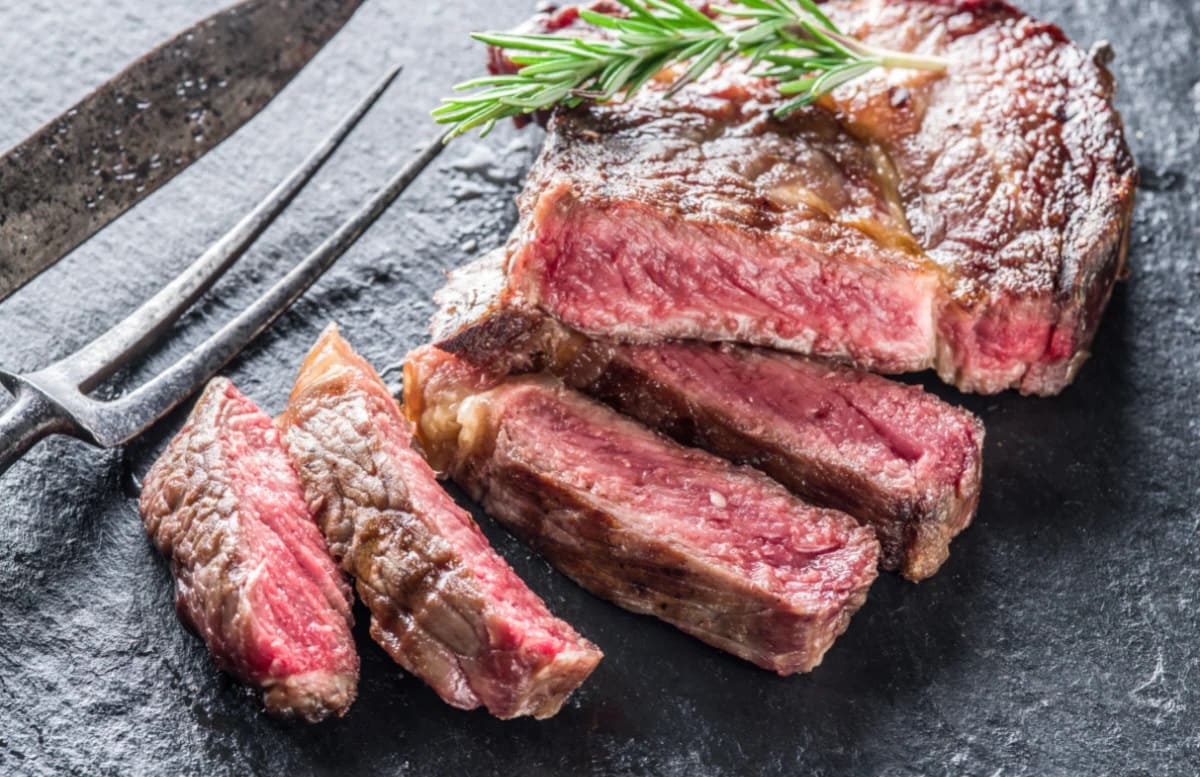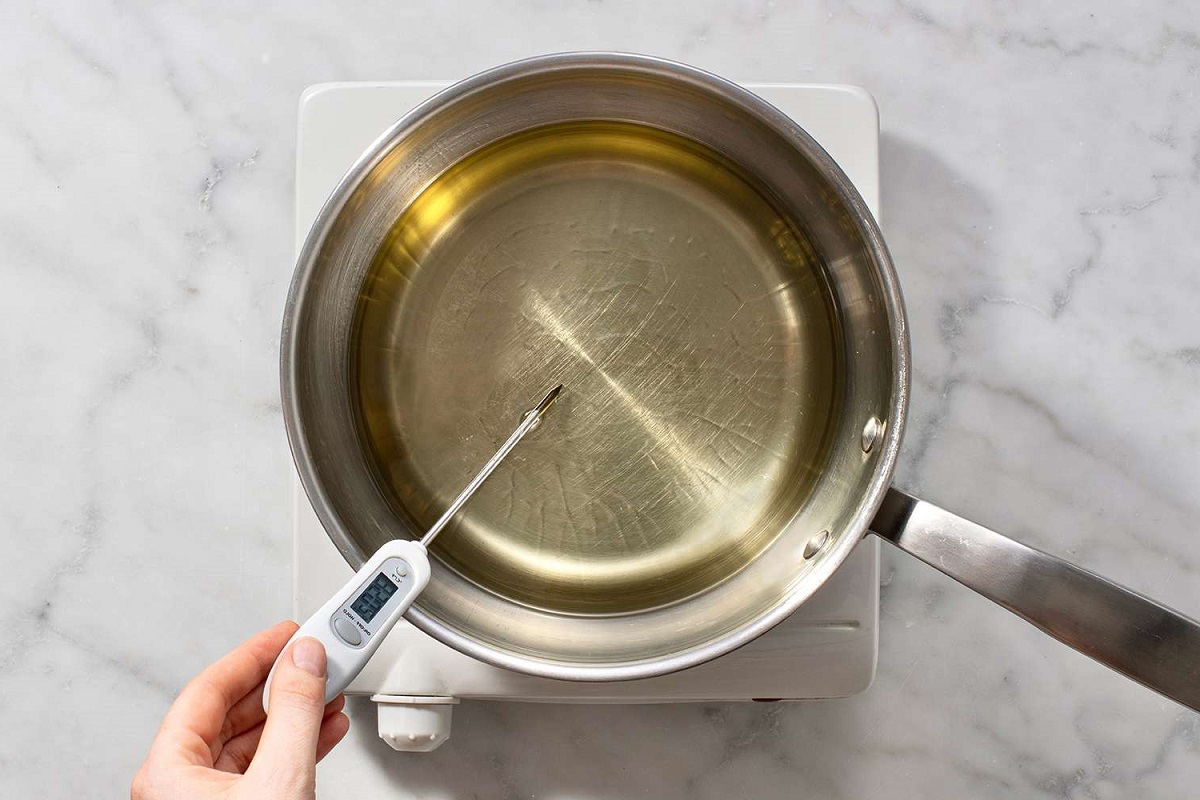Home>Culinary & Beverages>Optimizing Green Tea Temperature For Maximum Flavor And Health Benefits


Culinary & Beverages
Optimizing Green Tea Temperature For Maximum Flavor And Health Benefits
Published: February 22, 2024
Discover the ideal green tea temperature for a perfect balance of flavor and health benefits. Explore the culinary and beverage benefits of optimizing your brewing process.
(Many of the links in this article redirect to a specific reviewed product. Your purchase of these products through affiliate links helps to generate commission for Temperatures.com, at no extra cost. Learn more)
Table of Contents
The Science Behind Green Tea Temperature
The temperature at which green tea is brewed plays a crucial role in determining its flavor profile and potential health benefits. Understanding the science behind green tea temperature can empower tea enthusiasts to optimize their brewing process for a more enjoyable and beneficial tea-drinking experience.
When green tea leaves are steeped in hot water, various compounds within the leaves are extracted, influencing the taste and health properties of the resulting brew. One of the key components affected by temperature is the extraction of catechins, which are potent antioxidants found in green tea. Catechins contribute to the health-promoting properties of green tea, including its potential to support heart health and boost the immune system.
The temperature of the water used for brewing green tea also impacts the extraction of polyphenols, another group of beneficial compounds present in the leaves. Polyphenols are known for their antioxidant properties, which can help combat oxidative stress in the body and contribute to overall well-being.
Moreover, the temperature influences the release of amino acids, such as L-theanine, which contribute to the savory, umami flavor of green tea. L-theanine is also associated with promoting relaxation and mental clarity, making it a sought-after component for those seeking a calming and focused experience from their tea.
Additionally, the temperature of the water affects the extraction of caffeine from the tea leaves. While caffeine is often associated with providing an energy boost, the amount extracted can influence the overall balance of flavors in the brewed tea.
By understanding the impact of temperature on these various components, tea enthusiasts can tailor their brewing process to achieve the desired balance of flavors, health benefits, and caffeine content in their green tea.
In the next section, we will delve into the factors that influence green tea flavor and health benefits, providing further insight into the art and science of brewing the perfect cup of green tea.
Read more: Optimal Temperature For Baking Bread
Factors Affecting Green Tea Flavor and Health Benefits
Several factors contribute to the flavor profile and health benefits of green tea, making it a beverage of great complexity and depth. Understanding these factors is essential for maximizing the potential of green tea as a flavorful and health-promoting drink.
1. Varietal and Growing Conditions:
The specific variety of the tea plant, Camellia sinensis, and the conditions in which it is grown significantly impact the flavor and health properties of green tea. Variations in soil, climate, and altitude can influence the composition of compounds within the tea leaves, leading to diverse flavor profiles and levels of beneficial components such as catechins and polyphenols.
2. Processing Methods:
The processing methods employed after tea leaves are harvested play a crucial role in shaping the final characteristics of green tea. Different techniques, such as steaming and pan-firing, can preserve the natural freshness and delicate flavors of the leaves, contributing to a more vibrant and nuanced taste. Additionally, the level of oxidation in the leaves, which is minimal in green tea compared to black tea, impacts the retention of beneficial compounds.
3. Leaf Quality and Size:
The quality and size of the tea leaves can influence the extraction of flavor and health-promoting compounds during brewing. Smaller, whole leaves or buds often yield a more nuanced and complex flavor profile, as they contain a higher concentration of essential oils and other compounds. Conversely, broken or finely ground leaves, such as those used in tea bags or matcha powder, may result in a quicker and more robust extraction of flavors and nutrients.
4. Water Quality and Composition:
The quality and composition of the water used for brewing green tea can impact its flavor and health benefits. Water with high mineral content or impurities may interfere with the extraction of desirable compounds from the tea leaves, affecting the overall taste and potential health properties of the brewed tea.
5. Brewing Time and Temperature:
The duration and temperature of the brewing process significantly influence the extraction of flavor, caffeine, catechins, and other compounds from the tea leaves. Optimal brewing times and temperatures can enhance the balance of flavors and maximize the release of health-promoting components, while avoiding the potential bitterness that may arise from over-extraction.
By considering these factors, tea enthusiasts can make informed choices when selecting green tea varieties and brewing methods, ultimately enhancing their enjoyment of this revered beverage while reaping its potential health benefits.
Finding the Ideal Temperature for Brewing Green Tea
The quest for the perfect cup of green tea begins with finding the ideal temperature for brewing. The temperature at which green tea is steeped significantly influences its flavor, aroma, and potential health benefits. To unlock the full spectrum of flavors and beneficial compounds present in green tea, it is essential to consider the following temperature-related factors when preparing this beloved beverage.
Understanding Optimal Temperature Ranges
Green tea is renowned for its delicate nature, and the temperature at which it is brewed can either accentuate or diminish its nuanced flavors. The ideal temperature range for brewing green tea typically falls between 160°F to 180°F (71°C to 82°C). Within this range, the delicate balance of flavors, antioxidants, and amino acids can be coaxed from the tea leaves, resulting in a harmonious and satisfying brew.
Avoiding Boiling Water
Boiling water, which reaches 212°F (100°C), is generally considered too hot for brewing green tea. At this temperature, the delicate compounds in the tea leaves, such as catechins and L-theanine, can be compromised, leading to a brew that may taste overly bitter or astringent. Therefore, it is advisable to allow the water to cool slightly after reaching a boil before pouring it over the tea leaves.
Experimenting with Temperature Variations
While the recommended temperature range serves as a useful guideline, individual preferences and the specific characteristics of different green tea varieties may warrant slight adjustments. Some tea enthusiasts may find that certain green teas shine when brewed at the lower end of the temperature spectrum, around 160°F (71°C), resulting in a milder and more delicate infusion. Conversely, other varieties may reveal their full complexity and depth when brewed closer to 180°F (82°C), yielding a bolder and more robust flavor profile.
Embracing Precision with Temperature-Controlled Kettles
For those seeking precision in their tea brewing endeavors, investing in a temperature-controlled kettle can be a game-changer. These kettles allow users to set and maintain the desired temperature, ensuring that each cup of green tea is brewed with meticulous attention to the optimal temperature range. This level of precision empowers tea enthusiasts to consistently unlock the full potential of their favorite green tea varieties, resulting in a consistently exceptional tea-drinking experience.
Elevating the Tea-Drinking Experience
By honing in on the ideal temperature for brewing green tea, enthusiasts can elevate their tea-drinking experience to new heights. The art of finding the perfect balance between temperature and time, coupled with an understanding of the unique characteristics of different green tea varieties, enables individuals to savor the nuanced flavors and potential health benefits that green tea has to offer. Whether enjoying a tranquil moment of reflection or sipping tea in the company of others, the quest for the ideal brewing temperature adds an enriching dimension to the timeless ritual of green tea appreciation.
Tips for Optimizing Green Tea Temperature
-
Preheat Your Teaware: Before brewing green tea, it's beneficial to preheat your teapot or cup by rinsing it with hot water. This helps maintain the desired brewing temperature, preventing rapid heat loss when the hot water is poured over the tea leaves.
-
Invest in a Quality Thermometer: To achieve precision in temperature control, consider using a reliable thermometer designed for brewing tea. This tool allows you to monitor the water temperature accurately, ensuring that it falls within the optimal range for brewing green tea.
-
Adjust Brewing Temperature Based on Tea Type: Different green tea varieties may exhibit unique flavor profiles and characteristics that respond differently to brewing temperatures. For example, delicate and lightly steamed teas, such as sencha, may thrive at lower temperatures, while heartier teas like hojicha may benefit from slightly higher temperatures. Experimenting with temperature adjustments can unlock the full potential of each tea variety.
-
Embrace the Art of Steeping: Pay attention to the recommended steeping times for various green tea varieties, as these guidelines often complement specific temperature ranges. By aligning the brewing temperature with the suggested steeping duration, you can extract the optimal flavors and health-promoting compounds from the tea leaves.
-
Consider Water Quality: The quality of the water used for brewing green tea is as crucial as the brewing temperature itself. Opt for filtered or spring water to ensure a clean and neutral base for brewing, allowing the natural flavors of the tea to shine without interference from impurities or strong mineral tastes.
-
Explore Cold Brewing: While traditional hot brewing methods are widely practiced, cold brewing green tea can offer a refreshing alternative. Cold brewing involves steeping tea leaves in cold water for an extended period, typically in the refrigerator. This gentle process can yield a smooth and subtly sweet infusion, showcasing a different dimension of the tea's flavor profile.
-
Adapt to Personal Preferences: Ultimately, the quest for the perfect green tea brewing temperature is a deeply personal journey. Pay attention to your own taste preferences and adjust the brewing temperature accordingly. Whether you prefer a lighter, more delicate brew or a robust and full-bodied infusion, tailoring the temperature to suit your individual palate can enhance your overall tea-drinking experience.
By implementing these tips, tea enthusiasts can fine-tune their approach to brewing green tea, unlocking a world of flavors and health benefits while nurturing a deeper appreciation for this time-honored beverage.
Conclusion: Enjoying the Maximum Flavor and Health Benefits of Green Tea
Incorporating the optimal temperature into the art of brewing green tea is a transformative journey that elevates the tea-drinking experience to new heights. By understanding the delicate interplay between temperature, flavor extraction, and health-promoting compounds, tea enthusiasts can unlock the full spectrum of nuances and benefits inherent in this revered beverage.
Embracing the ideal temperature range of 160°F to 180°F (71°C to 82°C) allows for the harmonious extraction of catechins, polyphenols, amino acids, and caffeine from the tea leaves, resulting in a balanced and flavorful brew. Avoiding the use of boiling water and instead opting for precision through temperature-controlled kettles empowers individuals to consistently brew green tea that embodies the essence of its varietal characteristics.
The journey to optimizing green tea temperature extends beyond technical precision; it is a celebration of individual preferences and the diverse profiles of green tea varieties. By preheating teaware, investing in quality thermometers, and adjusting brewing temperatures based on tea types, enthusiasts can tailor their brewing process to suit their unique tastes, unlocking the full potential of each cup of green tea.
Furthermore, the exploration of cold brewing presents an alternative avenue for experiencing green tea, offering a refreshing and subtly sweet infusion that showcases a different facet of the tea's flavor profile. This gentle method of extraction underscores the versatility of green tea, inviting enthusiasts to savor its complexities through diverse brewing techniques.
Ultimately, the pursuit of the perfect brewing temperature for green tea is a deeply personal endeavor, guided by an appreciation for the interplay of science, art, and individual sensory preferences. By embracing the nuances of temperature, steeping times, and water quality, tea enthusiasts can embark on a sensory journey that transcends the act of brewing, culminating in the enjoyment of the maximum flavor and health benefits that green tea has to offer.
In essence, the quest for the ideal brewing temperature is an invitation to savor the rich tapestry of flavors and wellness-enhancing properties inherent in green tea, fostering a deeper connection with this time-honored elixir and enriching the ritual of tea appreciation.













